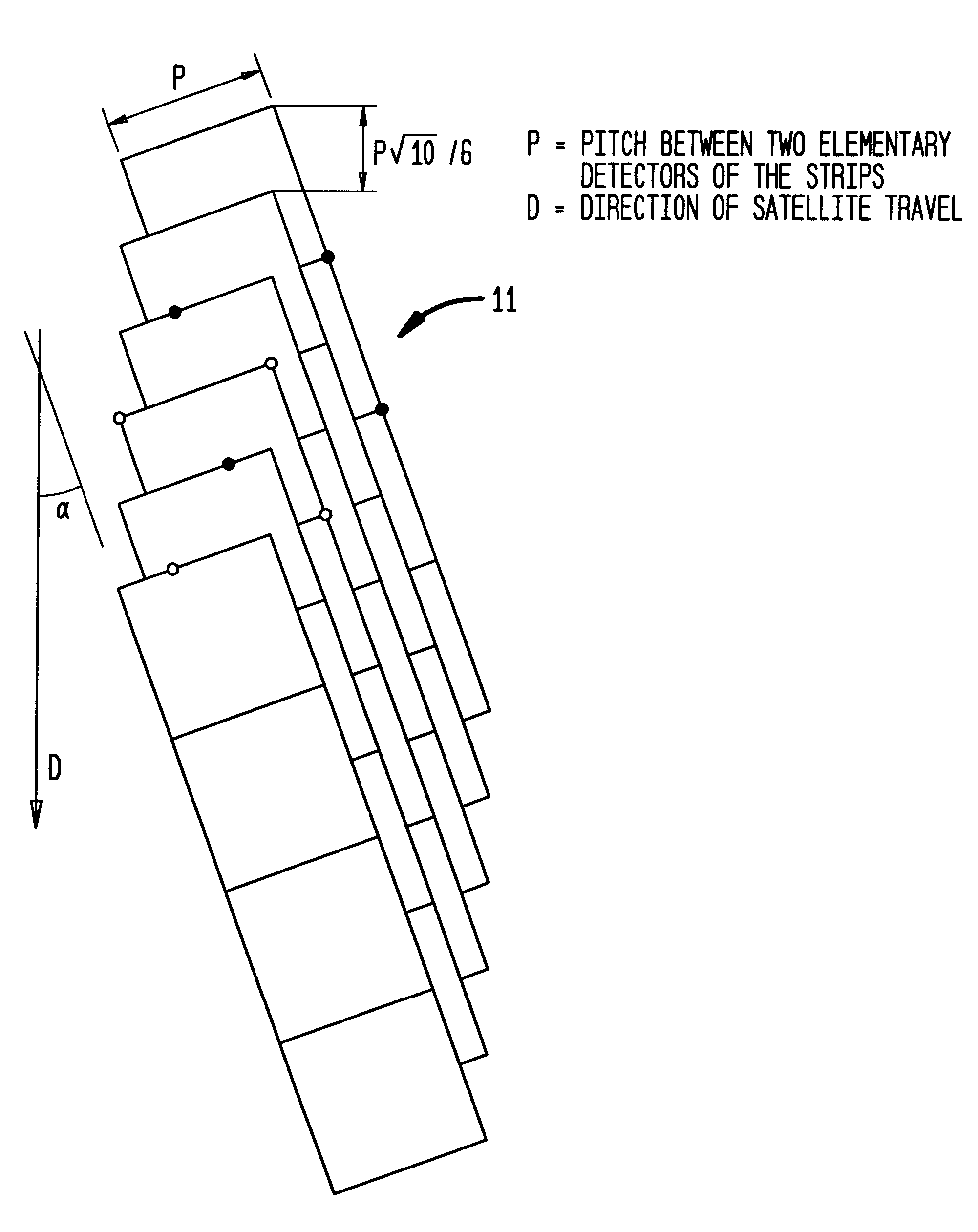Image acquisition by push-broom scanning
a pushbroom and scanning technology, applied in the field of image acquisition by pushbroom scanning, can solve the problems of insatiable solutions to mitigate the drawback, the image ceases to be acceptable, and the effect of reducing noise and limited spectrum folding
- Summary
- Abstract
- Description
- Claims
- Application Information
AI Technical Summary
Benefits of technology
Problems solved by technology
Method used
Image
Examples
Embodiment Construction
FIGS. 3 and 4 show a linear strip 11 placed in the focal plane of a satellite observation instrument, and also the projection in said focal plane of the travel direction D of the satellite carrying the strip 11.
The strip 11 is oriented in said focal plane so as to form an angle .alpha. relative to the direction D where .alpha. is equal to arctan(1 / 3).
The sampling pitch .DELTA..tau. in the travel direction D is equal to p10 / 6, where p is the pitch between two elementary detectors of the strip 11.
Such sampling is equivalent to acquiring three images by staggered sampling complying with Shannon's condition, i.e., for example, three images obtained by sampling of the type described in the Applicant's patent application WO 97 / 05451.
Consequently, with sampling of the kind shown in FIGS. 3 and 4, it is possible to obtain a new image, after interpolation, e.g. by adding together the three above-mentioned images corresponding to staggered sampling or by implementing processing of the type de...
PUM
 Login to View More
Login to View More Abstract
Description
Claims
Application Information
 Login to View More
Login to View More - R&D
- Intellectual Property
- Life Sciences
- Materials
- Tech Scout
- Unparalleled Data Quality
- Higher Quality Content
- 60% Fewer Hallucinations
Browse by: Latest US Patents, China's latest patents, Technical Efficacy Thesaurus, Application Domain, Technology Topic, Popular Technical Reports.
© 2025 PatSnap. All rights reserved.Legal|Privacy policy|Modern Slavery Act Transparency Statement|Sitemap|About US| Contact US: help@patsnap.com



